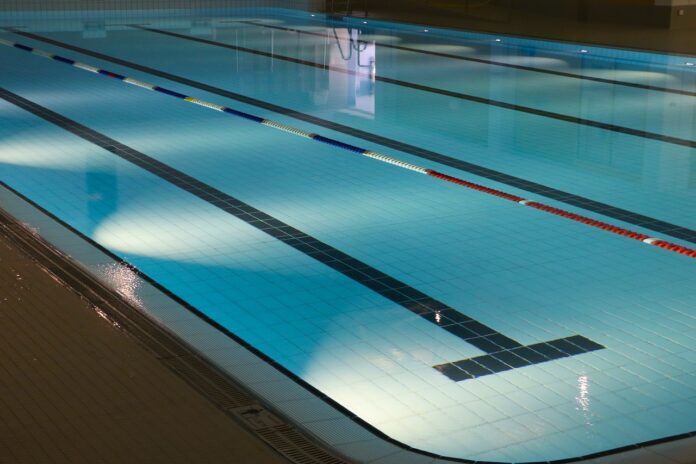Winterizing your swimming pool is essential to protect it from harsh winter conditions and to ensure it’s ready for use when the warmer months return. Proper winterization helps prevent damage to your pool and its equipment, saving you time and money on repairs. This guide will walk you through the steps to effectively winterize your pool.
When to Start Winterizing Your Swimming Pool
Timing is crucial for winterizing your pool. Generally, you should begin the process when the water temperature consistently drops below 65°F (18°C). Depending on where you live, this usually takes place in late fall or early winter. Starting too early or too late can affect the effectiveness of the winterization process.
Essential Tools and Supplies Needed
Before you start winterizing your pool, gather the following tools and supplies:
- Pool cover
- Winterizing chemicals (e.g., algaecide, winterizing shock)
- Pool vacuum and skimmer
- Water testing kit
- Telescoping pole and brush
- Air compressor or blower (for draining lines)
- Plug or winterizing kit for equipment
Step-by-Step Guide to Winterizing Your Pool
Step 1: Clean the Pool Thoroughly
Start by removing any leaves, debris, and dirt from the pool. Use a pool vacuum and skimmer to ensure the pool is completely clean. Scrub the sides and bottom of the pool to remove algae and stains. Proper cleaning is essential to prevent algae growth and stains during winter.
Step 2: Adjust the Water Chemistry
Test the pool water using a testing kit to check pH, alkalinity, and calcium hardness. Adjust the chemical levels as needed:
- pH: Maintain a pH level between 7.2 and 7.6.
- Alkalinity: Maintain alkalinity levels between 80 and 120 (ppm) parts per million.
- Calcium Hardness: They should be between 200 and 400 parts per million.
Proper water chemistry helps prevent scaling and corrosion.
Step 3: Lower the Water Level
To safeguard your pool against the harsh effects of freezing temperatures, it’s essential to lower the water level to just below the skimmer and tile line. This step helps prevent ice from forming in critical areas, reducing the risk of damage to the skimmer, plumbing lines, and pool structure. If needed, use a submersible pump to carefully lower the water level. Be mindful to avoid over-draining, as leaving too little water can also pose risks during winter.
Step 4: Drain and Protect the Equipment
Drain water from the pool pump, filter, heater, and other equipment. Remove any drain plugs and let the equipment dry completely. Store the equipment in a dry, protected area or cover it to prevent damage from freezing temperatures.
Step 5: Add Winterizing Chemicals
Add winterizing chemicals to the pool water according to the manufacturer’s instructions. This usually includes:
- Algaecide: Prevents algae growth.
- Winterizing Shock: Helps to eliminate any remaining contaminants.
These chemicals help maintain water quality and prevent issues during the winter months.
Step 6: Cover the Pool
To protect your pool throughout the winter, it’s crucial to cover it with a high-quality, durable pool cover. A well-fitted cover serves as the first line of defence against debris, reducing the chances of algae growth and keeping your pool water clean. Make sure the cover is tightly fitted and securely fastened to withstand harsh winter conditions, including heavy snow, ice, and strong winds. A properly secured cover not only preserves your pool but also saves you time and effort when reopening it in the spring.
Special Considerations for Different Types of Pools
- Above-Ground Pools: Remove ladders and store them in a dry place. Use an above-ground pool cover and make sure to follow the manufacturer’s winterizing instructions.
- In-Ground Pools: Use a pool cover specifically designed for in-ground pools. Consider using a floating cover for extra protection.
Common Mistakes to Avoid
- Starting Too Late: Winterizing too late can lead to freeze damage. Start the process when water temperatures drop.
- Inadequate Cleaning: Failing to clean the pool thoroughly can result in algae growth and stains.
- Skipping Equipment Draining: Not draining equipment can cause cracks and damage from freezing water.
Maintaining Your Pool Throughout the Winter
Regularly check the pool cover for debris and ensure it remains secure. Inspect equipment and water levels periodically to catch any issues early. Avoid further damage by addressing any problems promptly .
Preparing for Pool Opening in Spring
The pool cover should be removed in the spring and the pool should be thoroughly cleaned . Test and balance the water chemistry, and inspect and reassemble the equipment. Conduct a thorough check of the pool for any winter-related damage before reopening it for use.
Final Thoughts
Winterizing your swimming pool is a crucial step in protecting your investment and ensuring a smooth start to the swimming season. By following these steps, you can prevent damage, save time and money, and enjoy a hassle-free pool opening in the spring. Proper winterization helps extend the life of your pool and equipment, making it ready for fun when the weather warms up.



